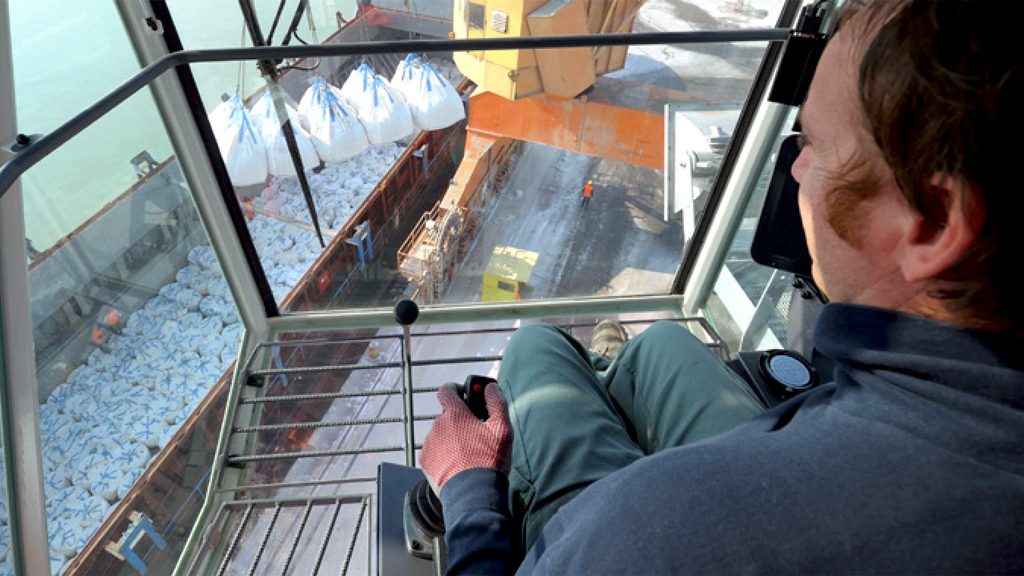For years, D-BOX Technologies Inc. has provided moviegoers with a premium ticket offering designed to enhance the cinematic experience. Viewers not only watch The Fast and the Furious on the screen, they feel the throaty rumble of car engines in specially-equipped seats. While movie blockbusters command the most attention, this Quebec-based technology company has been quietly transforming the world of equipment training, bringing realistic experiences to anything from crane simulators to rock truck training modules.
“Our roots are in music and audio waves, and how we can bring people into certain emotional state through high-precision rendering of these sounds through loudspeakers,” says Michel Paquette, vice-president, corporate affairs with D-BOX.
In testing, we have monitored the trainees heart rate and blood pressure,
—Michel Paquette
D-BOX Technologies Inc.
D-BOX has worked its technological magic on video games, home theatre applications and more than 200 theatrical releases, including all three films in The Expendables franchise, The Avengers, The Amazing Spider-Man, Deadpool and X-Men: Apocalypse. However, encoding Super Speedway, a 1997 documentary on auto racer Mario Andretti tipped the company off to the possibilities of using the technology for simulator training.
“We started looking at the technology from an interactive, real-time perspective and began to work with car simulations,” says Paquette.
“We began to produce banking, acceleration and deceleration cues to the nth degree of precision. But when we allowed a race car driver to review the experience he told us that we had the motion right, but that he didn’t feel it in his butt. We realized that the eye and ear were not good enough triggers to reproduce accuracy. Our engineers then developed a motion vibration generator that could perfectly mimic the vibration of specific engines under different situations.”
Paquette notes that D-BOX doesn’t build either theatre seats or simulators — it provides a black box that allows those seats and simulators to render a realistic experience. The company’s engineers integrate D-BOX, for example, into Caterpillar’s CAT Simulators, or the crane simulators offered by Montreal’s CM Labs.
“We’re not providing a generic equipment experience for these clients,” says Véronique Maheu, director of sales with D-BOX.
“If we’re providing the experience of a John Deere crawler we work with a subject matter expert who tests the experience we’ve simulated. When a hydraulic pump engages it should change the vibration of the equipment. A crane boom would also vibrate differently under load. You have to give the trainee that gut feeling of sitting on top of a hill and having the blade of their excavator hit a rock. The brain connects what you see, what you hear and what you feel.”
D-BOX provides realistic vibrations along the full range of engine RPMs referenced by cues found in the training company’s software. D-BOX’s expanding library of construction equipment motion and vibration simulation packages has seen it enhance training experiences ranging from rock trucks and cranes to backhoes, bulldozers and graders.
“In testing, we have monitored the trainees heart rate and blood pressure to determine how they’re responding to the simulation,” says Paquette.
“When we trigger all of the right responses we know they believe in the experience.”
Virtual reality is expanding the possibilities of construction equipment training.
“However, a large percentage of people become nauseated or disoriented when they spend too long with a VR headset,” says Maheu.
“For one client, we were able to bring perspective to the experience, so their sense of equilibrium balanced what they were seeing against what they were feeling. It grounded the trainees in the experience.”
Paquette notes that producing any simulated experience, whether the company’s work on Deadpool 2 or the newest crane simulator, represents a range of artistic choices.
“We watch the visuals and then decide where to enhance that experience,” he says.
“Each sound and motion on the screen provides a potential trigger to make an artistic choice and offer an enhanced narrative perspective. It’s all about storytelling.”




Recent Comments
comments for this post are closed